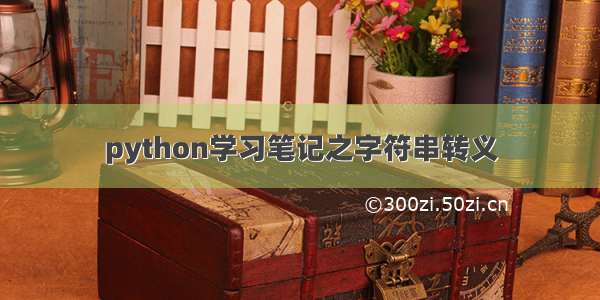
转义字符与字符串
\ #转义字符。例:
如果不希望前置 \ 的字符转义成特殊字符,可以使用 原始字符串,在引号前添加 r 即可:
>>>print('C:\some\name') # here \n means newline!C:\someame>>>print(r'C:\some\name') # note the r before the quoteC:\some\name
字符串包含多行时可以使用三重引号:"""..."""或'''...''',例:
如果不想要字符串中间的空行可以这样:
字符串的切片:
可以这么理解word = ‘Python’
+---+---+---+---+---+---+| P | y | t | h | o | n |+---+---+---+---+---+---+0 1 2 3 4 5 6-6 -5 -4 -3 -2 -1
append() 方法 可以在列表结尾添加新元素
>>>cubes.append(216) # add the cube of 6>>>cubes.append(7 ** 3) # and the cube of 7>>>cubes[1, 8, 27, 64, 125, 216, 343]
为切片赋值可以改变列表大小,甚至清空整个列表:
>>>letters = ['a', 'b', 'c', 'd', 'e', 'f', 'g']>>>letters['a', 'b', 'c', 'd', 'e', 'f', 'g']# replace some values>>>letters[2:5] = ['C', 'D', 'E']>>>letters['a', 'b', 'C', 'D', 'E', 'f', 'g']# now remove them>>>letters[2:5] = []>>>letters['a', 'b', 'f', 'g']# clear the list by replacing all the elements with an empty list>>>letters[:] = []>>>letters[]
range对象:
match语句
类似于c++中的switch语句
def http_error(status):match status:case 400:return "Bad request"case 404:return "Not found"case 418:return "I'm a teapot"case _:return "Something's wrong with the internet"
“变量名” _ 被作为 通配符 并必定会匹配成功。 这里的case_相当于最后的else。
如果没有 case 语句匹配成功,则不会执行任何分支。
变量赋值:
>>> a,b = 0,1>>> a,b(0, 1)>>> a,b = b,a+b>>> a,b(1, 1)>>> a,b = b,a+b>>> a,b(1, 2)>>> a,b = b,a+b>>> a,b(2, 3)>>>
关键字参数和位置参数
# 例:def parrot(voltage, state='a stiff', action='voom', type='Norwegian Blue'):print("-- This parrot wouldn't", action, end=' ')print("if you put", voltage, "volts through it.")print("-- Lovely plumage, the", type)print("-- It's", state, "!")# 可用以下方式调用parrot(1000) # 1 positional argumentparrot(voltage=1000) # 1 keyword argumentparrot(voltage=1000000, action='VOOOOOM') # 2 keyword argumentsparrot(action='VOOOOOM', voltage=1000000) # 2 keyword argumentsparrot('a million', 'bereft of life', 'jump') # 3 positional argumentsparrot('a thousand', state='pushing up the daisies') # 1 positional, 1 keyword# 函数调用时,关键字参数必须跟在位置参数后面。
特殊参数
指定某些位置只能填写位置参数或者关键字参数
仅限位置形参应放在 / (正斜杠)前。
把形参标记为 仅限关键字,应在参数列表中第一个 仅限关键字 形参前添加 *。
def f(pos1, pos2, /, pos_or_kwd, *, kwd1, kwd2):----------- --------------------| | || Positional or keyword || - Keyword only-- Positional only
#函数示例:>>>def standard_arg(arg):print(arg)>>>def pos_only_arg(arg, /):print(arg)>>>def kwd_only_arg(*, arg):print(arg)>>>def combined_example(pos_only, /, standard, *, kwd_only):print(pos_only, standard, kwd_only)#对于第一个函数,第一个函数定义 standard_arg 是最常见的形式,对调用方式没有任何限制,可以按位置也可以按关键字传递参数:>>>standard_arg(2)2>>>standard_arg(arg=2)2# 第二个函数 pos_only_arg 的函数定义中有 /,仅限使用位置形参:>>>pos_only_arg(1)1>>>pos_only_arg(arg=1)Traceback (most recent call last):File "<stdin>", line 1, in <module>TypeError: pos_only_arg() got some positional-only arguments passed as keyword arguments: 'arg'# 第三个函数 kwd_only_args 的函数定义通过 * 表明仅限关键字参数:>>>kwd_only_arg(3)Traceback (most recent call last):File "<stdin>", line 1, in <module>TypeError: kwd_only_arg() takes 0 positional arguments but 1 was given>>>kwd_only_arg(arg=3)3# 最后一个函数在同一个函数定义中,使用了全部三种调用惯例:>>>combined_example(1, 2, 3)Traceback (most recent call last):File "<stdin>", line 1, in <module>TypeError: combined_example() takes 2 positional arguments but 3 were given>>>combined_example(1, 2, kwd_only=3)1 2 3>>>combined_example(1, standard=2, kwd_only=3)1 2 3>>>combined_example(pos_only=1, standard=2, kwd_only=3)Traceback (most recent call last):File "<stdin>", line 1, in <module>TypeError: combined_example() got some positional-only arguments passed as keyword arguments: 'pos_only'
循环的技巧
在字典中循环时,用 items() 方法可同时取出键和对应的值:
>>>knights = {'gallahad': 'the pure', 'robin': 'the brave'}>>>for k, v in knights.items():... print(k, v)gallahad the purerobin the brave
在序列中循环时,用 enumerate() 函数可以同时取出位置索引和对应的值:
>>>for i, v in enumerate(['tic', 'tac', 'toe']):... print(i, v)0 tic1 tac2 toe
同时循环两个或多个序列时,用 zip() 函数可以将其内的元素一一匹配:
>>>questions = ['name', 'quest', 'favorite color']>>>answers = ['lancelot', 'the holy grail', 'blue']>>>for q, a in zip(questions, answers):... print('What is your {0}? It is {1}.'.format(q, a))What is your name? It is lancelot.What is your quest? It is the holy grail.What is your favorite color? It is blue.
逆向循环序列时,先正向定位序列,然后调用 reversed() 函数:
>>>for i in reversed(range(1, 10, 2)):... print(i)97531
按指定顺序循环序列,可以用 sorted() 函数,在不改动原序列的基础上,返回一个重新的序列:
# /zh-cn/3/library/functions.html#sortedsorted(iterable, /, *, key=None, reverse=False)根据 iterable 中的项返回一个新的已排序列表
>>>basket = ['apple', 'orange', 'apple', 'pear', 'orange', 'banana']>>>for i in sorted(basket):... print(i)appleapplebananaorangeorangepear
使用 set() 去除序列中的重复元素。使用 sorted() 加 set() 则按排序后的顺序,循环遍历序列中的唯一元素:
>>>basket = ['apple', 'orange', 'apple', 'pear', 'orange', 'banana']>>>for f in sorted(set(basket)):... print(f)applebananaorangepear
优先级
or < and < not
Python 与 C 不同,在表达式内部赋值必须显式使用 海象运算符 :=
序列和其他类型的比较¶
序列对象可以与相同序列类型的其他对象比较。这种比较使用字典式 顺序:
首先,比较前两个对应元素,如果不相等,则可确定比较结果;
如果相等,则比较之后的两个元素,
以此类推,直到其中一个序列结束。
如果要比较的两个元素本身是相同类型的序列,则递归地执行字典式顺序比较。如果两个序列中所有的对应元素都相等,则两个序列相等。如果一个序列是另一个的初始子序列,则较短的序列可被视为较小(较少)的序列。 对于字符串来说,字典式顺序使用Unicode 码位序号排序单个字符。例:
(1, 2, 3) < (1, 2, 4)[1, 2, 3] < [1, 2, 4]'ABC' < 'C' < 'Pascal' < 'Python'(1, 2, 3, 4) < (1, 2, 4)(1, 2) < (1, 2, -1)(1, 2, 3) == (1.0, 2.0, 3.0)(1, 2, ('aa', 'ab')) < (1, 2, ('abc', 'a'), 4)
模块导入
# 将fibo模块中的fib fib2模块导入>>>from fibo import fib, fib2>>>fib(500)0 1 1 2 3 5 8 13 21 34 55 89 144 233 377# 导入fibo模块中的所有模块。这种方式会导入所有不以下划线(_)开头的名称。大多数情况下,不要用这个功能,这种方式向解释器导入了一批未知的名称,可能会覆盖已经定义的名称。#注意,一般情况下,不建议从模块或包内导入 *, 因为,这项操作经常让代码变得难以理解。不过,为了在交互式编译器中少打几个字,这么用也没问题。>>>from fibo import *>>>fib(500)0 1 1 2 3 5 8 13 21 34 55 89 144 233 377将fibo模块导入,并以fib名字在脚本中使用import fibo as fibfib.fib(500)0 1 1 2 3 5 8 13 21 34 55 89 144 233 377
















